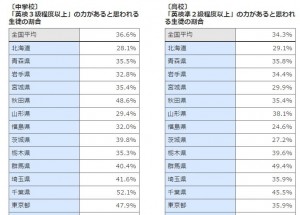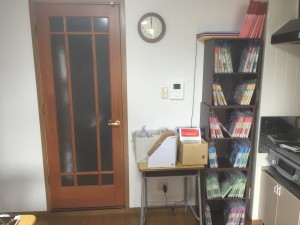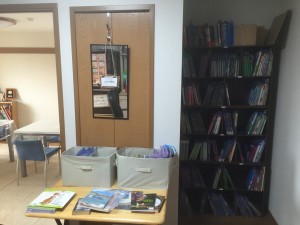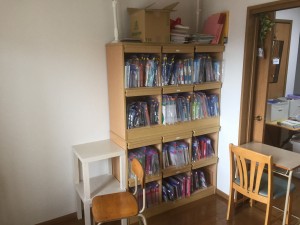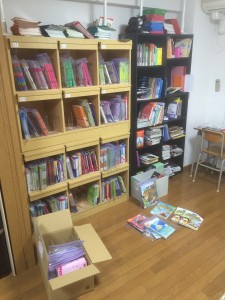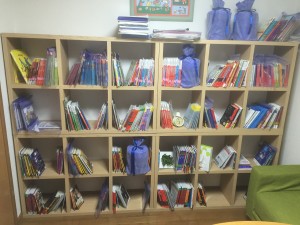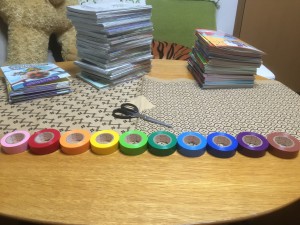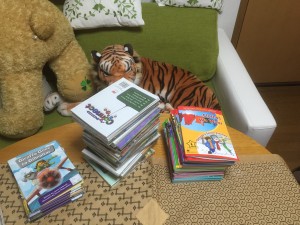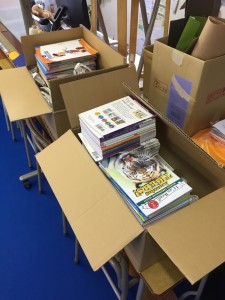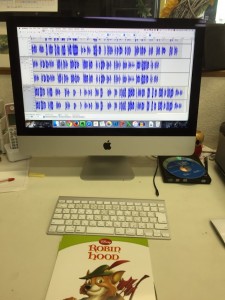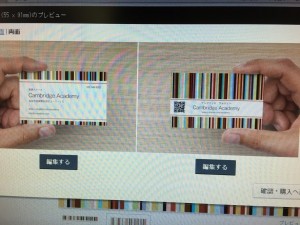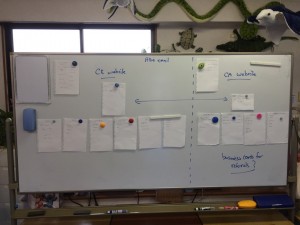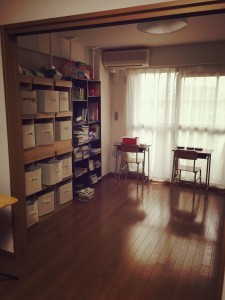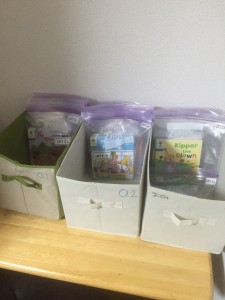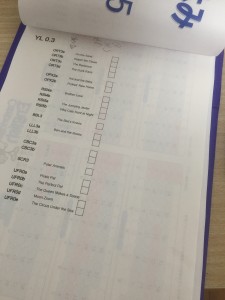Japanese High School Students’ English
Unsurprisingly similar to junior high school students’ English
Following on from the report on Japanese junior high school student English proficiency, I saw this article today about high school students (also this better article with the percentages for each prefecture in Japanese). Miyagi sadly is below the national average for both junior and senior high school.
I don’t think the results are very surprising.
I do wish they would use better tests to set targets, as in my experience it is possible to pass Eiken with relatively poor English skills if you are lucky or prepare for the test format. I would prefer to see a test with separate scores for skills rather than the catch-all pass/fail STEP Eiken.
Also the root of the problem can be seen here: poor English teacher language proficiency. It is incredible, given how much effort and resources Japan puts into English education, that people with insufficient practical language ability are employed to teach it. It should be a huge priority to encourage and help English teachers in junior and senior high school improve their language skills, and to make practical language proficiency a firm requirement when hiring new English teachers.
And of course, everyone should be doing extensive reading and listening 😉
curriculum extensive reading high school junior high school school management
by sendaiben
2 comments
Cambridge Academy: Looking at Year Two
Still Evolving at a Rapid Rate
Since I wrote my last post a few weeks ago the program has continued to evolve. This will just be a quick update as we head towards the spring break and our planned stocktake and preparation for next year.
Conceptual Breakthrough
The most exciting development is a conceptual breakthrough I had a couple of weeks ago. As our library expanded, we continued buying more of our existing books, as well as new series. The new books mostly worked, but some are a better fit for our students than others. We started to run out of shelf space, and my reading checklists were getting crowded.
I also had to decide if we were going to buy multiple sets of the new books. If we did, would we continue making most students read all the books at each level? Even if the number of books at each level continued to grow?
Our system was getting twisted out of shape.
Then I had a conceptual breakthrough. It seems really obvious now, but it took me a while to spot it. We actually have two kinds of books in our lower level collection: core books, which most students should read, and supplementary books, which can be given to students that might enjoy them or need extra practice. We need multiple sets of core books, but only single copies of supplementary books. There should be a limited number of core books, but we can pretty much buy anything as a supplementary book.
In practice this means that most students will read the core books. Some students will read supplementary books if they need more practice at a certain level. Others may read supplementary books if they seem like they would enjoy them.
This breakthrough has made it easier to think about and plan the program.
Testing
We have decided to introduce a number of tests to the Academy in order to provide us with data, to motivate and encourage students, and to reassure parents.
We held the TOEFL ITP (pre-TOEFL) last week at the school. Unfortunately, and somewhat ironically given my rant post about using Eiken tests appropriately, we gave it to all our students, including the JHS ones. This was a mistake as it was far too hard for some of them.
In the future we will only use the TOEFL with our more advanced students.
We are also planning to use the JUMP and ACE tests from ELPA (for JHS and SHS students respectively) twice a year in April and December.
This will cost money and take class time, but I think it will help motivate students by showing them their progress and give our school and program more respectability.
Preparing for Next Year
Before April, we need to:
- do a stocktake and find out how many copies/sets of each book we have
- add missing book information to our database
- order more books to fill in gaps in our collection
- prepare new student files and checklists
- buy more CD players (a couple have broken)
- think about the interior design of the reading classroom (it’s fine as it is but I would like it to be more welcoming, comfortable, and relaxing)
The Academy from 2016 will have around 60 students. This is far fewer than I was hoping for, but broadly in line with my expectations.
In my experience it takes a few years for word of mouth about a program to take off, and the nature of an ER-based system is that results take years not months to emerge. I am still hopeful that our enrolment will take off in a year or two (year three or four of the program).
Wish us luck!
curriculum extensive reading high school junior high school school management
by sendaiben
6 comments
Cambridge Academy: Year One
This is the third post about the Cambridge Academy, a private English program for junior and senior high school students. You can read the introductory post here, and the six-month update here.
The Academy started in April 2015, so this is the eleventh month of operation. It seems like a good point to review the year and talk about what we have learned since the last update.
The Good
There have been several positive developments. Best, and most important, of all is that our current students still seem to be enjoying their classes and reading well as far as I can tell. We have a range of outcomes depending on motivation, how often the students miss class, and ability, but even the least motivated students have read around 40,000 words this year. The students I mentioned in the last update who had run into problems now seem to be back on track.
We have figured out what to do with intermediate students. Once students go past YL 1.0 we class them as intermediate and give them more freedom to choose books. Up until 1.0 we do ‘guided ER’: class teachers give them their reading material and keep track of what they have read. Once they become intermediate they can choose their own books (teachers give advice until they get used to taking responsibility for their reading) within an appropriate level range.
Levels are now indicated with coloured vinyl tape. We use ten colours for beginner, and the same ten colours for intermediate and above, as follows:
Colour – Beginner YL – Intermediate+ YL
- Pink – 0.1 – 1.1-1.2
- Red – 0.2 – 1.3-1.4
- Orange -0.3 – 1.5-1.9
- Yellow -0.4 – 2.0-2.4
- Light Green – 0.5 – 2.5-2.9
- Green – 0.6 – 3.0-3.9
- Light Blue – 0.7 – 4.0-4.9
- Blue – 0.8 – 5.0-5.9
- Purple – 0.9 – 6.0-6.9
- Brown – 1.0 – 7.0+
The tape is easily available on Amazon or in stores. Putting it on books and ziplock bags is a bit of a pain, but it really helps teachers put beginner sets back in the right place quickly, and students find books at an appropriate level in the intermediate levels.
The reason I use tape and not stickers, despite the extra time it takes to measure and cut the tape, is that it is far more durable and pretty much doesn’t fall off (unlike the stickers).
We had some very good explanatory sessions with parents and students (sanshamendan) where we asked parents to come in for fifteen minutes and gave them a quick status report on how their child was doing. I was able to share their reading numbers and talk about what we do in class. This also gave parents a chance to ask questions or raise concerns, and a few of them did which meant we were able to set their minds at ease. We did the sessions over a number of weeks in November and December. I’m not sure if we will be able to continue doing them if student numbers grow, but will try to do something similar at least for all students in their first year.
We have bought a lot more books. We took delivery of about 1000 in January, and I am nowhere near caught up on labeling them and sorting out the audio. The good thing is that I think we’re probably okay for breadth at the beginner levels now. The next thing is to work on the intermediate levels, particularly on getting really appealing series of books, so that students can find something they like and read lots of similar content.
The Bad
Somewhat predictably, we are still finding it hard to recruit students from outside of Cambridge English, the parent English school. I was hoping to have grown the student body to around one hundred by the end of this first year, but instead we have seen slight attrition as students quit to focus on entry tests, move away, or get busy with other activities.
Student numbers fell by about 15% as current students decided they didn’t like the new system (fair enough as most of them were in normal eikaiwa classes when we unilaterally moved them to the new Academy format). We have another 10% or so who will graduate and go away to university. Somewhat making up for that, we have up to 40% who will come up from Cambridge English, and about 10% of new students who have booked trial lessons this month.
If all goes very well, we should end up with slightly more students than we had this time last year.
We weren’t able to redesign the website last year so that is a future project.
What happens next?
Well, the most urgent thing right now is to make sure the current students stay and as many prospective new students as possible join. We also need to tweak the program slightly to move writing practice into the ‘output’ classes and reduce the amount of formal homework students have. This year we found that most students did not do homework, which interfered with the smooth running of classes. Next year we will have no set homework but instead introduce lots of opportunities for language practice so that more motivated students can do it and the others don’t feel they have to.
I am really looking forward to seeing the students’ progress going forward. We have half a dozen now who are into our intermediate level, having read 300,000 words+. I am hoping that we (and they) will start seeing results in terms of their school studies and general English proficiency. This is where the program is going to live or die, and where our future students are going to come from. It will also make all the hard work worthwhile.
I imagine we will continue buying books too 🙂
business curriculum extensive listening extensive reading high school junior high school school management self-study
by sendaiben
11 comments
Cambridge Academy (six months in)
Extensive Reading for Secondary Students Part 2
Well, we’ve been running the Cambridge Academy for about six months now.
Academy classroom
Cambridge Academy (see previous write-up here): so far so good. We’ve run into some problems and changed course a couple of times, but the program is shaping up and it’s time for a big recruitment push. In this post I will talk about some hiccups we encountered, solutions, and future plans.
Problems so far
1. We still don’t have enough books
2. Some books don’t have commercially available audio
3. We don’t have a coherent program beyond the beginner level (over YL0.9)
4. Some students (10%>) are not performing well
5. Writing activities are not a good fit for an extensive reading class
Solutions
1. We continue to buy books and process existing ones (label and put into database and reading checklists) so that students can use them. We’ve probably doubled our existing readers since April and will probably continue doing this for the foreseeable future. Practice is making better, and our processing is getting much quicker now.
Processing new books
Processing new books involves the following steps:
- open box, remove plastic wrapping etc.
- find YL/word count information
- label books with SEG labels
- input book information into our reader database
- copy CDs and put away the masters
- put books and CDs into ziplock bag sets
- add book/set information to reading checklists
- put books on the shelves
The two major problems are if books don’t have YL/word count information, and if books don’t have CDs/audio. Right now we guesstimate YL and count words if the books are short enough. For longer books we try to find the word counts online. This site is great to find US-published series.
2. For books with no commercial audio available, we have been making our own by reading the books out loud into an iMac using Audacity to produce mp3 files that we then burn to CDs using iTunes. So far this is working very well, but it takes quite a long time and we still have over 500 books to make CDs for!
Recording audio
3. None of our students have gone beyond YL1.0 yet, but a couple of them will reach it soon. Before that happens we need to make sure we have enough books for them to read. Another problem is what to do about audio. I suspect that by the time students go over YL1.0 audio will be less important, but I am not 100% sure.
The other question is whether to continue grouping books into sets or to move to having individual books. If individual books, what will the checklists look like? I suspect all of this will get worked out over the next six months or so.
4. We have two problems with some of our students. The first is that a small number of students (two or three) seem to be exaggerating the amount they read or reading in a very perfunctory way (just looking at the pictures). I’m not sure how much of a problem this is, as they may well still be getting some benefit from the audio input. If it is a problem, I don’t really know what to do about it. I have tried talking to them, asking them about the content of books, and had them read the books out loud to me, but I am still not happy about the situation. Work in progress.
The other problem is potentially more serious. So far only one student seems to have run into it. Basically the student seems to have hit a wall around YL0.3, and is reporting that they cannot understand anything in the books at that level. I have tried talking to the student and explaining that it’s not necessary to understand everything but rather important to try and catch familiar words and think about the meaning, but I am not sure how helpful that was or how to solve this if it comes up with other students. Another work in progress.
5. Our initial model bundled extensive reading and writing practice (through weekly writing assignments) into one class, with speaking activities in the other. However, this model has several important drawbacks and we’ll be changing it in the future. Our ER classes have up to 12 students in them, so checking each student’s writing in 55 minutes is really hard and quite stressful for the teacher. Checking writing assignments in the ER class also means that our teaching assistants cannot take the class (they would be able to if it was just ER). Finally, having writing assignments in the ER class makes the class more stressful and less fun. Students are worried about finishing their writing instead of just relaxing and enjoying the reading class.
From next year we will include the writing assignments in the communication class (output), while the ER class will focus on reading and listening to the accompanying CDs.
Future plans
We have a few plans not mentioned above. The first and most important is that now that the program is getting into a half-decent shape, it’s time to try to expand it and recruit more students. So far all our students joined from within the school. Only half a dozen or so joined the school once the Academy was running, and we haven’t been actively advertising the course.
Business cards for advertising
From this week we will start actively trying to recruit new students, through our new Academy webpage and various advertising campaigns. Our goal is to have 100 students in the Academy by December 15th this year.
Planning the new website
Our website is getting a bit dated so we plan to get a new one made in November this year.
We are also going to explore whether the ER class is a standalone product. At first we went off the SEG model, which pairs an ER class with a communication class, but my friend DE suggested that the ER class might be our main product, with the communication class as an optional extra. This would be much easier to provide logistically, so I am excited to see if it is true over the next couple of months.
Another thing that we need to work on is making the ER classroom more comfortable. Right now it is set up with school-style desks and chairs, but we are planning to make more of a cafe-style with more comfortable chairs and funkier design/lighting/etc. Ideally it should be a welcoming space that students want to spend time in, and prospective students are attracted to. Work in progress, but I hope to post some pictures in the next update.
We need to find another couple of teaching assistants so we can train them before expanding the number of classes. We’re looking for 2nd-year university students at the moment.
Eventually we are hoping to open new branches in other parts of the city. I think that will be an option once we have 200 students at the original location. Another work in progress!
Any questions or advice? Please comment below.
business curriculum eikaiwa extensive listening extensive reading graded readers high school junior high school language courses school management self-study
by sendaiben
4 comments
Extensive Reading for Secondary Students
I’ve been wanting to write this post for a long time.
On April 1st this year the language school I help out at started a new section called Cambridge Academy. Getting ready for this and implementing it over the last four weeks has been a really fun challenge, and now that we are taking a little break for the Golden Week holidays I feel like I have some lessons to share.
In this post I will talk about what we are doing, why we decided to start a new sections, and a few problems and successes we have had.
Why start a new school?
Several reasons. The main one is that we weren’t happy with our existing junior and senior high school classes. It seemed that while the most able and motivated students could do very well, others did not. We gave students many chances to do work outside of class, and the ones that did got better and the ones that didn’t, didn’t. We were looking for a way to improve that.
I was also able to visit SEG in Tokyo, and see their incredible resources and program. This inspired me to start something similar in Sendai, and we have benefited hugely from using Akio Furukawa’s experiences and advice in setting up the program.
Finally, the academy format and the results we are hoping for seem to be quite commercially viable. While my main motivation with the school is to provide students with excellent education, it’s nice if the school pays for itself too.
How does the Academy work?
There are two main concepts behind the Cambridge Academy. The first is to provide students with the chance to receive large amounts of comprehensible input through graded and leveled readers, alongside speaking and writing activities. Initially the input was based mainly on books but we quickly realised the power of reading with CDs so we have since changed this to books with CDs.
The second concept is to do 55 minutes of reading/listening in the school each week. This ensures that all students will receive at least 40 hours of reading/listening per year, or 200 hours over the course of the five years we envision the ideal program lasting (JHS 1st grade to SHS 2nd grade). Of course, motivated and ambitious students will do much more at home, but with the in-class reading system ensures that all students will make some progress.
The students will also have a speaking class with a focus on production, a writing assignment each week, and the chance to do online vocabulary study with Word Engine.
What have you done so far?
At first the main stumbling block was space: we needed an extra classroom that could house the books and other resources as well as accommodate twelve students. Luckily the apartment above the school became available in March, so we quickly rented it and set it up for school use. As the Academy classes are pretty much silent, we shouldn’t have any problems with the neighbours or the landlord.
Next was gathering resources. We already had a large graded and leveled reader collection built up over the last twelve years or so, but it wasn’t enough to serve the fifty or so students who started in April, let alone the numbers we would like to see eventually. After several large orders to englishbooks.jp and Amazon, we are still playing catchup and will probably continue buying books throughout the year (this matches my experience at Tohoku University, where book resources never quite seem to meet student demand).
Main bookshelves at the Academy.
The next step was to develop a system to determine what students would do, how we would track it, and how to organise resources. Here we benefited immensely by being able to copy a lot of what SEG does. The interesting thing is that we found ourselves adopting elements of the SEG system that didn’t make sense to me at first (like having books organised in sets with CDs, and having students read while listening).
Book sets organised using ziplock freezer bags.
We had a couple of CD players when we started classes, but after I saw how much the students enjoyed listening as they read I quickly bought ten more so that we could offer a player to each student. Personal CD players can be found on Amazon.jp for between 1500 and about 5000 yen. There seem to be limited numbers as these products are no longer popular. We have also failed to find CD players that can play MP3 CDs for a reasonable price (there is a Sony model that costs about 25,000 yen, but this seems a bit too high to me). An ongoing project.
We have also noticed the need to keep track of what each student has read so that we can give them new books in a timely way. Right now the best solution appears to be a checksheet that we will put in each students file so that we have a record of that they have read. This is also a work in progress but it is going quite well.
Checksheet to track student reading.
Results so far
The first four weeks have been great. Students seem to enjoy the format and even the students who don’t seem to enjoy English classes do the reading activities willingly. About half of the students do homework, the others do not. My policy here is to encourage and support, but leave it up to each student as to how much they want to do.
For the school, the format means that we can serve up to 24 students each weekday evening (four six-student speaking classes and two twelve-student reading classes that alternate). In practice this means that three teachers can take four classes, which increases the profitability quite a bit. The schedule looks like this:
19:20-20:15
Class A speaking with Teacher 1
Class B speaking with Teacher 2
Classes C and D reading with Teacher 3
20:25-21:20
Class C speaking with Teacher 1
Class D speaking with Teacher 2
Classes A and B reading with Teacher 3
From a business perspective the profit per student in the Academy system is higher than other classes. We charge 15,000 yen a month plus tax for 44 two-hour classes a year, so I think this is a good value for students too (they would have to pay more than that each month just to buy the books they end up reading).
The specialized knowledge required to set up the system, and the cost of books and other equipment (we’ve spent over a million yen setting up the Academy, and we already had thousands of books) means that it would be difficult for other schools to copy our classes if we are successful.
Most of all, it is wonderful to see the students enjoying their studies, and achieving success each week. The Academy style classes also work very well with students who have social issues. For a teacher, it’s a very fun class to run and I hope our students will find themselves doing better at school.
What’s next?
Well, we’ll continue developing the system and trying to improve it. I suspect motivation may become a problem for some students once the novelty wears off, but I haven’t seen this so far. Hopefully the combination of success and the contrast between an hour of reading/listening and the rest of their busy day will help stave this off.
Business-wise I would like to see the Academy grow in size, and if it gets big enough I would like to move it to a new location in the city centre to increase our catchment area. Ideally this would happen in the next year or two.
So far I am very pleased with how things are going. I’ll post an update in September or so and let you know how we are doing. Please feel free to ask any questions in the comments.
